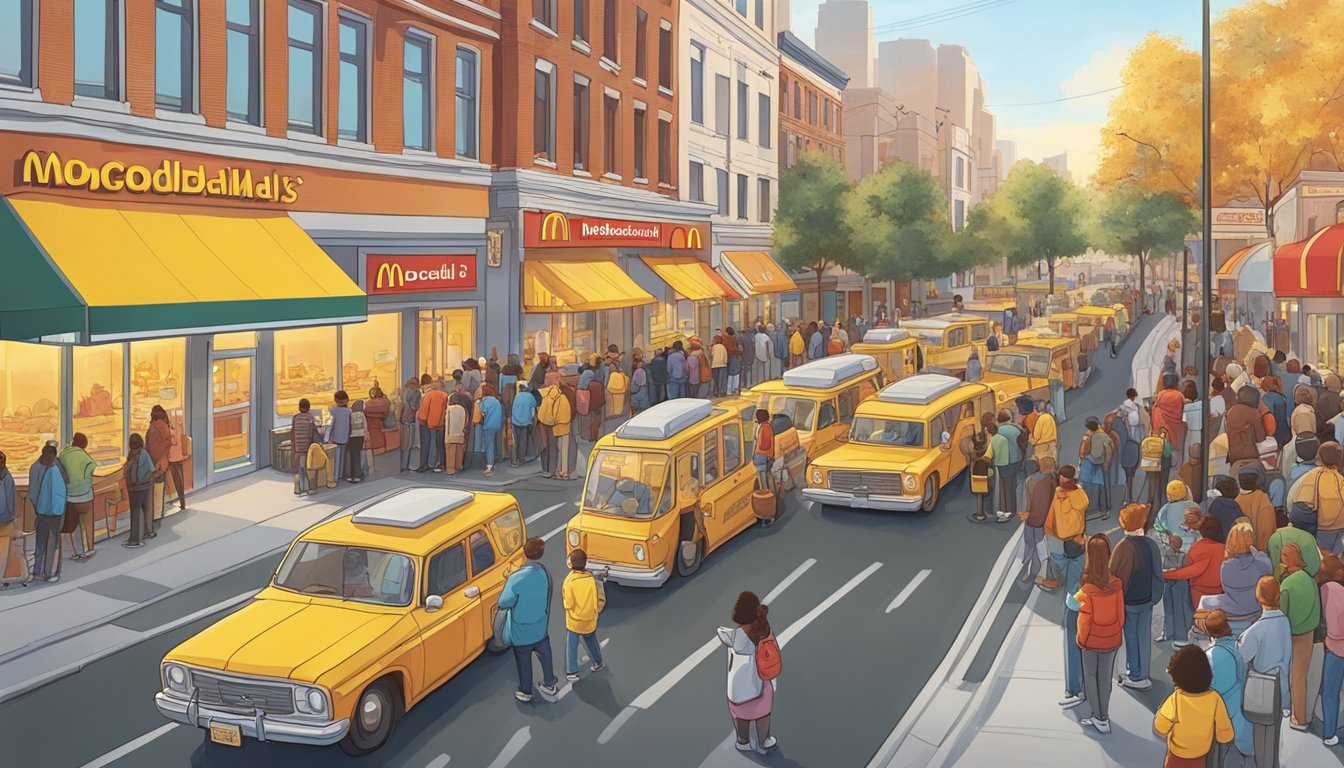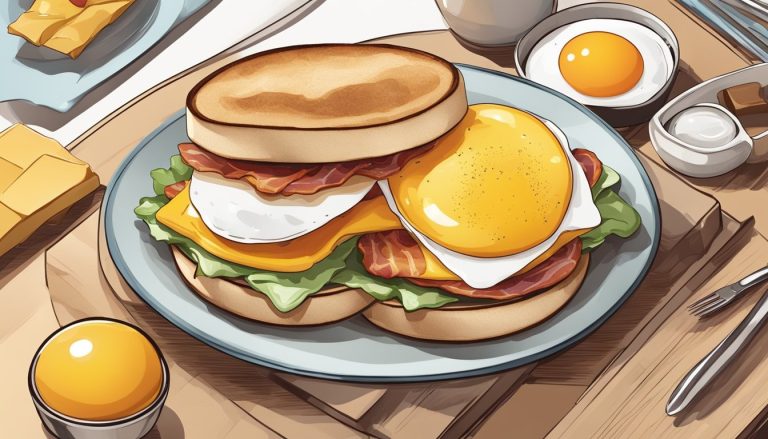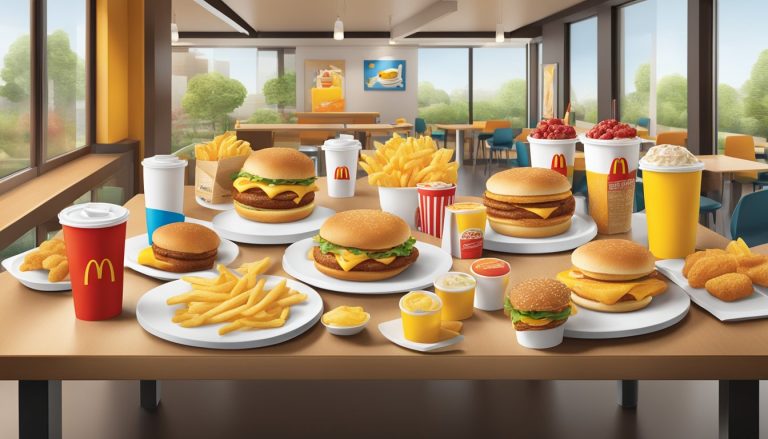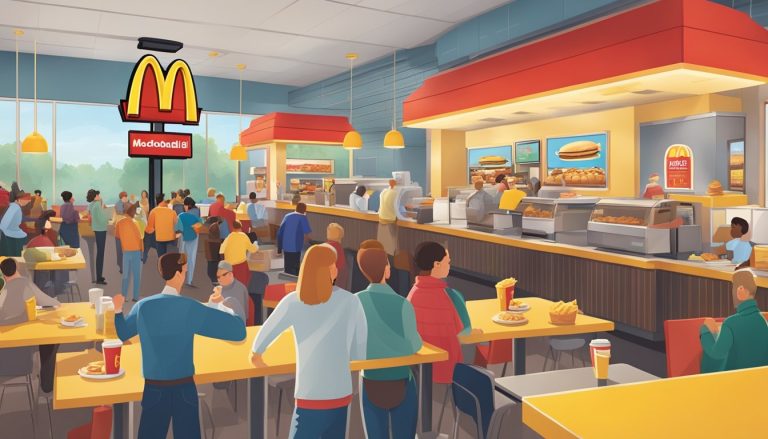McDonald’s breakfast has become an integral part of American pop culture since its introduction in the 1970s. The fast-food giant’s morning offerings have transcended mere sustenance to become a cultural touchstone, appearing in movies, TV shows, and even inspiring memes and social media trends. McDonald’s breakfast menu has shaped the way people view and consume morning meals, influencing eating habits and expectations far beyond the realm of fast food.
The popularity of McDonald’s breakfast items has led to significant changes in the fast-food industry. In 2015, the company made a groundbreaking move by introducing all-day breakfast, fundamentally altering consumer expectations and forcing competitors to adapt. This decision not only boosted sales but also cemented McDonald’s breakfast as a flexible, anytime option in the minds of consumers.
McDonald’s breakfast has also played a role in the company’s marketing strategies and collaborations with pop culture icons. The chain has partnered with various celebrities and musicians to create special meal promotions, often incorporating breakfast items. These collaborations have helped McDonald’s maintain cultural relevance and appeal to younger generations, further solidifying its place in the pop culture landscape.
Historical Context and Globalization
McDonald’s journey from a single restaurant to a global fast-food powerhouse reflects broader trends of globalization and cultural exchange. Its expansion transformed local cuisines and dining habits worldwide.
The Origin and Rise of McDonald’s
Brothers Richard and Maurice McDonald opened their first restaurant in 1940. Ray Kroc joined in 1954, revolutionizing the business through franchising. His vision propelled McDonald’s rapid growth across the United States.
Kroc standardized operations, ensuring consistent quality and service. This approach laid the groundwork for McDonald’s future global success. By 1967, McDonald’s had expanded to Canada, marking its first international venture.
Global Expansion and Cultural Integration
McDonald’s international growth accelerated in the 1970s and 1980s. The company adapted its menu to local tastes while maintaining core offerings. In Japan, teriyaki burgers appeared alongside Big Macs.
The franchising model allowed for quick expansion into new markets. Local franchisees brought cultural insights, helping McDonald’s integrate into diverse communities. By 2025, McDonald’s operates in over 100 countries.
This global presence has made McDonald’s a symbol of American culture abroad. It has also influenced local food cultures, sometimes sparking debates about cultural homogenization and the spread of Western dietary habits.
McDonald’s as a Cultural Icon
McDonald’s has become a ubiquitous symbol of American culture, influencing entertainment, art, and popular discourse. Its iconic branding and marketing strategies have solidified its place in the global cultural landscape.
Iconography and Branding
The Golden Arches logo is one of the most recognizable symbols worldwide. Introduced in 1962, it has become synonymous with fast food and American culture. Ronald McDonald, the company’s clown mascot, debuted in 1963 and quickly became a beloved character for children.
Other memorable characters include the Hamburglar and Grimace, part of McDonaldland’s colorful cast. These figures have appeared in commercials, toys, and merchandise for decades.
McDonald’s branding extends beyond visual elements. The “I’m lovin’ it” jingle, introduced in 2003, has become an earworm recognized across the globe.
McDonald’s in Movies and TV Shows
McDonald’s has featured prominently in numerous films and television series. In “Coming to America” (1988), Eddie Murphy’s character works at a McDonald’s parody called McDowell’s.
The 1994 film “Richie Rich” showcases a McDonald’s inside the wealthy protagonist’s mansion. “The Fifth Element” (1997) imagines a futuristic McDonald’s with robot servers.
Television shows like “The Office” and “Seinfeld” have incorporated McDonald’s into their storylines, often as a relatable backdrop for everyday situations.
Prominent Collaborations and Endorsements
Celebrity endorsements have played a crucial role in maintaining McDonald’s cultural relevance. In 2020, the Travis Scott Meal became a viral sensation, sparking a trend of celebrity collaborations.
K-pop group BTS partnered with McDonald’s in 2021, creating global buzz with their signature meal. Rapper Saweetie followed with her own meal later that year.
These partnerships have helped McDonald’s connect with younger audiences and stay current in an ever-changing cultural landscape. They blend pop culture, music, and fast food in innovative ways.
Marketing and Advertising Innovations
McDonald’s breakfast marketing has evolved alongside changing consumer habits and media landscapes. The company has embraced creative advertising, social media strategies, and targeted campaigns to maintain its cultural relevance.
Evolution of McDonald’s Advertising
McDonald’s breakfast advertising has transformed dramatically over the years. In the 1970s and 1980s, the focus was on traditional media like TV and print. Commercials featured catchy jingles and memorable characters like the Egg McMuffin Man.
As media consumption shifted, so did McDonald’s approach. The company embraced digital platforms, creating interactive experiences and online games. Their “I’m lovin’ it” campaign, launched in 2003, became a global phenomenon, featuring celebrities and pop culture icons.
More recently, McDonald’s has utilized augmented reality and mobile apps to engage customers. The McDonald’s app offers exclusive breakfast deals and promotions, bridging the gap between digital and in-store experiences.
Influence of Social Media and Influencers
Social media has become a crucial tool in McDonald’s breakfast marketing arsenal. The company leverages platforms like Instagram, Twitter, and TikTok to connect with younger audiences and stay culturally relevant.
McDonald’s collaborates with influencers and celebrities to promote breakfast items. In 2020, they partnered with Travis Scott for a meal promotion that included breakfast items, generating significant buzz online.
User-generated content plays a vital role in their strategy. The company encourages customers to share photos and experiences with hashtags like #McDonalds and #McDonaldsBreakfast, creating organic brand ambassadors.
McDonald’s also uses social media for real-time marketing, responding to trends and current events with clever breakfast-themed posts.
Targeted Marketing Campaigns
McDonald’s employs data-driven marketing to create targeted breakfast campaigns. They segment audiences based on demographics, location, and behavior to deliver personalized messages.
The company has launched region-specific breakfast items and promotions. For example, they introduced the McGriddles French Toast sandwich in select U.S. markets before a wider rollout.
McDonald’s also tailors campaigns to different cultures and ethnicities. They’ve created Spanish-language ads for Hispanic markets and partnered with diverse influencers to reach various communities.
Seasonal promotions play a significant role in their strategy. The popular Monopoly promotion often includes breakfast items, driving traffic during morning hours.
Digital billboards and geotargeted mobile ads allow McDonald’s to promote breakfast specials to commuters and nearby potential customers, increasing foot traffic to their restaurants.
Product Strategies and Consumer Engagement
McDonald’s breakfast menu has become a cultural touchstone through clever product strategies and consumer engagement tactics. The company’s approach balances tradition with innovation to maintain its place in the public consciousness.
Classic Menu Items and Limited Editions
The Egg McMuffin, introduced in 1972, revolutionized fast-food breakfast. This iconic sandwich, along with crispy Hash Browns, forms the core of McDonald’s morning offerings. The Big Mac, while not a breakfast item, has influenced the development of breakfast sandwiches.
McDonald’s periodically introduces limited-edition items to create buzz. The Travis Scott Meal in 2020 sparked a social media frenzy. This strategy keeps the menu fresh and encourages repeat visits.
Happy Meal Phenomenon and Toy Promotions
The Happy Meal, launched in 1979, transformed children’s dining experiences. Its combination of kid-sized portions and collectible toys has made it a cultural phenomenon.
Toy promotions often tie into popular movies or TV shows. These collaborations boost sales and cement McDonald’s place in consumer culture. Many adults now collect Happy Meal toys, showing the promotion’s lasting impact.
Adapting to Customer Demand and Dietary Habits
McDonald’s has evolved its menu to address changing dietary habits. The company now offers healthier options like fruit and yogurt parfaits.
In response to consumer demand for all-day breakfast, McDonald’s expanded its morning menu availability in 2015. This move catered to shifting eating patterns and increased customer satisfaction.
Nutritional information is now prominently displayed, helping consumers make informed choices. McDonald’s has also reduced portion sizes and modified recipes to align with health-conscious trends.
Cultural Relevance in Everyday Life

McDonald’s breakfast has become deeply woven into the fabric of daily life for many people. Its influence extends far beyond just food, shaping social interactions, popular culture, and urban lifestyles.
McDonald’s as a Social Space
McDonald’s restaurants serve as popular gathering spots for diverse groups. Friends meet over coffee and hash browns to catch up before work. Families enjoy weekend breakfasts together, bonding over pancakes and sausage. In many communities, senior citizens congregate daily for affordable meals and companionship.
The familiar environment provides a comfortable “third place” between home and work. Free Wi-Fi attracts students and remote workers seeking a change of scenery. The consistent menu and atmosphere make McDonald’s a reliable meeting point for people from all walks of life.
The Influence on Music and Urban Culture
Hip-hop artists frequently reference McDonald’s breakfast in lyrics, cementing its place in urban culture. The affordability and accessibility of items like the Egg McMuffin resonate with working-class narratives. Some rappers even incorporate menu items into their stage names or album titles.
McDonald’s collaborations with musicians like Travis Scott have further solidified its cultural cachet. Limited-edition meals and merchandise create buzz among young consumers. The iconic golden arches appear in music videos and on streetwear, blending fast food imagery with fashion trends.
Convenience Culture and the Drive-Thru Phenomenon
The drive-thru window revolutionized breakfast habits, catering to busy lifestyles. Commuters grab coffee and breakfast sandwiches without leaving their cars. This speed and efficiency have become hallmarks of modern convenience culture.
Drive-thru breakfast sales soared during the COVID-19 pandemic, highlighting its essential role. The familiar routine of ordering through a speaker and picking up food at the window provides comfort and normalcy. McDonald’s breakfast has become synonymous with on-the-go eating, shaping expectations for quick service across the fast-food industry.
Media Presence and Public Perception
McDonald’s breakfast has been a prominent feature in various media forms, shaping public perception and sparking debates. From documentaries to animated shows, the fast food giant’s morning offerings have left an indelible mark on popular culture.
McDonald’s in Documentaries and Animation
The 2004 documentary “Super Size Me” put McDonald’s breakfast under scrutiny. Filmmaker Morgan Spurlock ate only McDonald’s food for 30 days, including breakfast items. This experiment highlighted potential health risks associated with frequent fast food consumption.
Animated shows have also featured McDonald’s breakfast. “The Simpsons” often depicted characters enjoying McMuffins and hash browns. These portrayals reinforced the ubiquity of McDonald’s breakfast in American culture.
The 2016 film “The Founder” dramatized the creation of McDonald’s, including the development of the Egg McMuffin. This cinematic representation gave audiences insight into the origins of the iconic breakfast menu.
Behind the Scenes of a Fast Food Giant
Media coverage has occasionally provided glimpses into McDonald’s breakfast operations. News segments have showcased the early morning routines of McDonald’s staff preparing breakfast items.
Food Network shows have featured chefs attempting to recreate McDonald’s breakfast recipes at home. These programs often highlight the complexity of mass-producing consistent breakfast items.
McDonald’s has also released its own behind-the-scenes content. Videos showing the egg-cracking process for McMuffins aim to dispel myths about the use of artificial ingredients.
Public Perception and Criticism
McDonald’s breakfast has faced criticism for its nutritional content. Health advocates often point to high calorie and sodium levels in items like the Sausage McMuffin.
The convenience of McDonald’s breakfast has been praised by many consumers. The introduction of all-day breakfast in 2015 was met with enthusiasm from customers seeking flexibility.
Critics have raised concerns about the environmental impact of McDonald’s breakfast packaging. This has led to company initiatives to increase the use of recyclable materials in breakfast containers.




